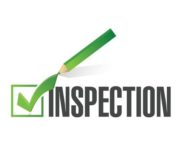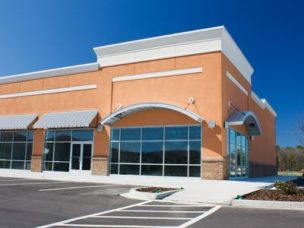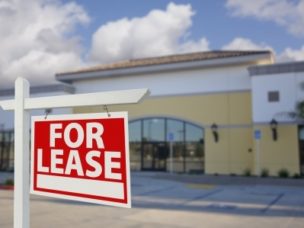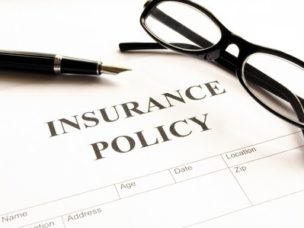Stay in the know
Subscribe to the Real Estate Blog and we’ll send you an email each time something new is posted.
Subscribe to the Real Estate Blog and we’ll send you an email each time something new is posted.
Blogs
Real Estate Blog
Negotiating Inclusions and Exclusions from Operating Expenses or Common Area Maintenance (CAM) Costs
Most retail leases are so called triple net leases, in which Tenant pays its proportionate share of Insurance, Real Estate Taxes and Common Area Maintenance, in addition to Base rent.
By contrast, most office leases are modified “gross” leases, in which Tenant pay its proportionate share of Operating Expenses (including Insurance) and Real Estate Taxes over the “Base” amount (usually the calendar year of Term Commencement for Operating Expenses, or the fiscal year in which the Term commences for Taxes) for Operating Expenses and Real Estate Taxes.
In both circumstances Tenant must be vigilant to ensure that Operating Expenses and CAM costs are reasonable, appropriately incurred, and properly reimbursable by a tenant (rather than a landlord) of Property.
For example:
(A) The costs of capital repairs and/or replacements is not something a tenant should reasonably be expected to pay. Landlords generally are willing to amortize such “capital” costs over the useful life of the “capital” item for Federal Income Tax purposes, and to include only each year’s amortized amount in CAM or Operating Expenses. In some instances, landlords are willing to exclude entirely the replacement of certain capital items such as a roof or the repaving of a parking lot.
(B) Increases in “Controllable Expenses” should be capped at some reasonable number, typically three percent (3%) per annum. Controllable Expenses should include all expenses other than snow plowing and removal, Insurance, Real Estate Taxes, and utilities. From a tenant’s perspective this should not be on a cumulative basis. This creates an incentive on landlords to minimize Controllable Expenses and to properly manage the Property.
(C) Other typical exclusions from CAM and/or Operating Expenses include:
(1) cost of any service directly to and paid directly by any tenant (outside of such tenant’s Operating Expense payments);
(2) the cost of any items for which Landlord is reimbursed by insurance proceeds, condemnation awards, a tenant of the Building, or otherwise to the extent so reimbursed;
(3) ground lease payments (if any);
(4) costs incurred by Landlord due to the violation by Landlord (or any tenant) of the terms and conditions of any lease of space or by violation of any law, code, regulation, ordinance or the like, which costs would not have been incurred but for such violation;
(5) bad debt expenses and interest, principal, points and fees on debts or amortization on any ground lease, mortgage or mortgages or any other debt instrument encumbering the Building and property on which the Building is situated;
(6) marketing costs, leasing commissions and/or attorneys’ fees in connection with the negotiation and preparation of letters, deal memos, letters of intent, leases, subleases and/or assignments, space planning costs, and other costs and expenses incurred in connection with lease, sublease and/or assignment negotiations and transactions with present or prospective tenants or other occupants of the Building;
(7) costs, including permit, license and inspection costs, incurred with respect to installation of improvements made for tenants or other occupants in the Building or incurred in renovating or otherwise improving, decorating, painting or redecorating vacant space for tenants or other occupants in the Building;
(8) costs incurred to obtain or upgrade a LEED certification or similar rating for the Building or Property (though such monitoring and maintenance costs required to maintain such a rating or certification once obtained may be included in Operating Expenses);
(9) rentals and other related expenses for leasing an HVAC system, elevators, or other items (except when needed in connection with normal repairs and maintenance of the Building or in the event of an emergency) which if purchased, rather than rented, would constitute a capital improvement not included in Operating Expenses;
(10) expenses in connection with services or other benefits which are not offered to Tenant, or for which Tenant is charged directly, but which are provided to another tenant or occupant of the Building without charge;
(11) electric power costs or other utility costs for which any tenant directly contracts with the local public service company;
(12) costs (including in connection therewith all attorneys’ fees and costs of settlement, judgments and/or payments in lieu thereof) arising from claims, disputes or potential disputes in connection with potential or actual claims, litigation or arbitration pertaining to tenants of the Building;
(13) costs incurred in connection with the original construction or any future expansion of the Building or real property;
(14) costs incurred to comply with laws relating to the removal of hazardous materials or to remove, remedy, treat or contain any hazardous materials existing prior to the lease;
(15) advertising and promotional expenses;
(16) charitable or political contributions; and
(17) art work.
In order to give real teeth to these exclusions the tenant should also negotiate for the right to audit the CAM or Operating Expenses. The intent is to create a lease whereby the landlord is reimbursed for its actual reasonable costs of operating the property in an efficient manner. The CAM or Operating Expense provision is not intended to be a profit center for the landlord, nor is it intended to provide the landlord reimbursement for its capital investment in the property.




